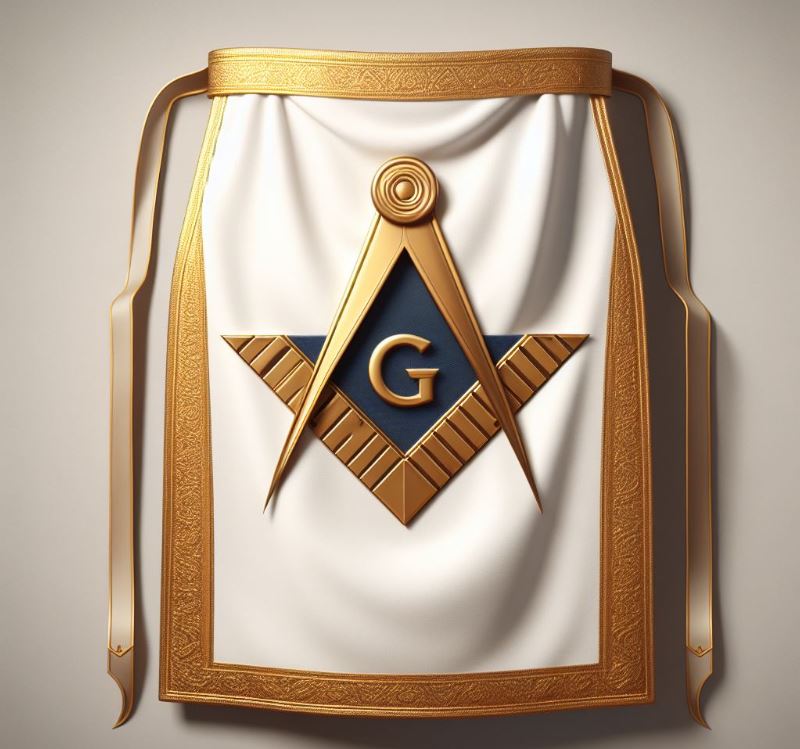Lodges, Aprons, and Funny Handshakes: Freemasonry 101


In this chapter, Hodapp is focused on Freemasonry from a current historical context. He starts off by discussing the allure of the mystique widely discussed by those interested in knowing what happens behind a locked door of a lodge. This allure of mystery may seem appealing to some. Mystery can also cause others to speculate wildly which in turn produces conspiracy theories. Some of the conspiracy theories today about Freemasonry were established over 300 years and persist today.
Hodapp goes on to talk about the most recognized symbol in the world that defines Freemasonry: the square and compasses. Most people see the symbol of the square and compasses and instantly recognize it belonging to Freemasonry. The square and compasses also produce in the minds of some a secret society hidden in plain sight. This notion is far from the truth! There are Masons today that proudly wear the square and compasses and other symbols on rings, hats, t-shirts, watches, car decals, belt buckles and tattoos. Freemasonry’s symbols have been around for hundreds of years with our founding fathers and other well-known artists and dignitaries displaying them after they became members. Symbols of Freemasonry were worn over 300 years ago as much as they are worn today. More important, we are a society “with secrets” and not a “secret society”.
Although the symbols of Freemasonry are prevalent within society today, the wearing and displaying of them engendered hostility in past decades. Masons have historically suffered from assassination, imprisonment, and fines imposed on members simply because of conspiracy theories and tropes.
Note:
An example of this is the deaths and imprisonment of millions of Masons in Germany during the reign of Adolph Hitler.
Even though our fraternity has seen good and bad times, the memberships worldwide are in the millions. Yes, the numbers of memberships today have fallen dramatically but men are still seeking to become members and petition lodges daily. Each state has a Grand Lodge which rolls up to the Grand Lodge of England located in London.
The question above all being asked is what exactly is Freemasonry? Freemasonry is a fraternity of men that are dedicated to improvements in their own morality, community, and providing charity through fundraising to those in need. Freemasonry is about FAITH in GOD, HOPE in immortality, and CHARITY that is provided to our community. Freemasonry is not a religion. In fact, all lodges in Texas (I only know about Texas) are closed on Sunday’s. Our fraternity is dedicated to charity but more importantly the development of a man’s character. The same principles of morality, community, and charity have been taught since 1723.
Note:
A foundational note is important before proceeding.
One question that often comes up is when were the values instilled in men joining a lodge? What exactly are the roots of Freemasonry? In this first chapter, these questions are not touched upon, but it is important that a brief overview of the establishment of Freemasonry be explored:
- There is no clear history, book, or writing that can pinpoint an exact timeframe of the foundations of Freemasonry.
- Freemasonry does, however, have its foundations in builders’ guilds of around the 14th century.
- There is still an open dispute about the origins of the first established Grand Lodge.
- Some claim that the first Grand Lodge was established in Scotland well before the Grand Lodge of England (located in London then as it is today).
- What is not in dispute is the first constitution of Freemasonry.
Written in 1723 (Berman, 2023), the first constitution of Freemasonry was partly derived from the principles of the “Enlightenment” period in Europe. Also, during that time in (1717) the Grand Lodge of England was established which then produced the initial masonic ritual and established member conduct withing the fraternity. Several historical factors contributed to the development of conduct required by all men interested in joining the fraternity during the early 18th century. In fact, the principles of “Enlightenment” during that time consisted of radical values that Freemasonry has adopted. Principles such as:
- Tolerance of religious practices
- Government by the people based upon ability and not social status
- High standards related to civility
- Education
- Personal improvement
–More to come…..
[i] (Berman, 2023) – https://www.quatuorcoronati.com/ The 1723 Constitution